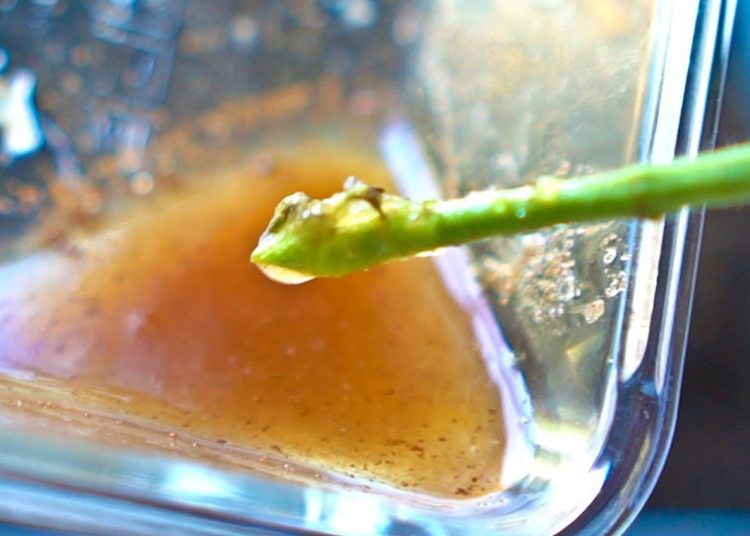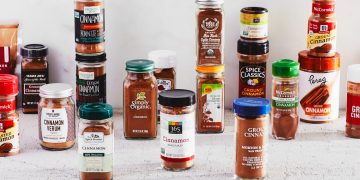When it comes to propagating plants, using rooting hormones is a common practice to encourage the growth of roots on plant cuttings. These hormones, whether synthetic or natural, stimulate root development and increase the chances of successful propagation. However, many gardeners are looking for natural alternatives to chemical rooting hormones. One such option that has sparked interest is honey. Can honey be used as an effective rooting hormone? Let's explore this idea.
What are Rooting Hormones?
Rooting hormones are substances used to promote root development in plant cuttings. Commercial rooting hormones usually contain synthetic compounds like indole-3-butyric acid (IBA), which is a type of auxin, a plant hormone that promotes cell division and root growth. There are also natural rooting hormones, including those derived from willows or honey, that contain compounds which can help stimulate the rooting process.
The Case for Honey as a Rooting Hormone
Honey has long been known for its medicinal and antimicrobial properties. It contains a mix of sugars, amino acids, vitamins, and enzymes, which can help promote plant health in various ways. Many gardeners wonder if honey, a natural substance, can also be effective for encouraging roots to grow on plant cuttings.
How Honey May Promote Rooting
Antibacterial Properties: One of honey's most notable characteristics is its natural antibacterial and antifungal properties. When you apply honey to a cutting, it can help protect the cutting from harmful pathogens, reducing the risk of rotting and infection during the rooting process. This can create a healthier environment for the cutting to develop roots.
Sugars as a Source of Energy: Honey is rich in sugars, which can provide an energy boost to the cutting. This might help the plant cutting survive and establish itself while developing roots. The sugars act as a form of nourishment during the early stages of propagation, when the cutting is still forming new roots and leaves.
Wound Healing: Honey has been used in medicine for centuries due to its ability to promote wound healing. When you cut a plant, the exposed tissue can be vulnerable to infection or drying out. Applying honey to the cut end of a stem may help protect it, providing a kind of "seal" that promotes healing and encourages root development.
Hormonal Activity: While honey doesn't contain rooting hormones like synthetic products, some studies suggest that it might have minor plant-growth-promoting effects. Honey contains small amounts of certain plant-derived compounds, like phytohormones, which can play a role in stimulating root growth. However, this effect is relatively mild compared to stronger commercial rooting hormones.
Benefits of Using Honey as a Rooting Hormone
Natural and Readily Available: Honey is a natural substance and can be found in most homes or easily purchased. For those interested in organic gardening, it’s an attractive alternative to synthetic rooting hormones that may contain chemicals you want to avoid.
Antimicrobial Properties: Honey helps prevent the spread of harmful bacteria or fungi that could cause your cuttings to rot. This makes it a useful tool for protecting cuttings while they form roots, particularly for those more susceptible to infection.
Inexpensive: Compared to commercial rooting hormones, honey is relatively inexpensive and can be found in almost any kitchen, making it an accessible and cost-effective alternative.
Non-Toxic: Unlike some chemical rooting hormones, honey is non-toxic and safe to handle, even for gardeners who prefer not to use chemicals in their gardening practices.
How to Use Honey for Rooting Plant Cuttings
Using honey as a rooting agent is simple and straightforward. Here's a step-by-step guide:
Prepare the Cutting: Select a healthy plant cutting with at least one node (a small bump or bud where roots are likely to grow). Trim the cutting to a manageable size, typically about 4-6 inches long.
Dip the Cutting in Honey: Apply a small amount of honey to the cut end of the stem. You can either dip the cut end into pure honey or use a cotton swab to apply it directly.
Plant the Cutting: Once the cutting is coated with honey, plant it in a pot with well-draining soil or another rooting medium, such as perlite or vermiculite. Make sure the cutting is placed in an area with proper humidity and warmth to encourage root growth.
Maintain Moisture: Keep the cutting moist but not soaking wet. You can also cover it with a plastic bag or place it in a humidity dome to help retain moisture.
Wait for Roots: Depending on the plant, it may take a few weeks to a couple of months for roots to develop. Be patient and check periodically to ensure the cutting is not rotting or drying out.
Limitations of Using Honey as a Rooting Hormone
While honey has many benefits, it is important to understand its limitations:
Mild Effect on Root Growth: Honey does not contain high levels of plant hormones like synthetic rooting hormones, meaning it may not be as effective at stimulating root growth in all plants. For plants that require a more robust rooting stimulant, honey may not provide the same results as commercial products.
Limited Research: While there are anecdotal reports of honey's effectiveness in plant propagation, scientific studies on its use as a rooting hormone are limited. The exact mechanisms behind its potential effectiveness are still not fully understood.
Not Suitable for All Plants: Honey may work well for certain softwood or herbaceous plants, but it may not be as effective for tougher, woody cuttings, which may require stronger growth stimulants.
Which Plants Can Benefit from Honey?
Honey may work best for rooting plants that are relatively easy to propagate and don't require highly specialized rooting hormones. These include:
- Herbaceous Plants: Basil, rosemary, mint, oregano
- Succulents: Jade plants, aloe vera, echeveria
- Flowering Plants: Geraniums, petunias, impatiens
- Vining Plants: Pothos, ivy
Harder-to-root plants, especially woody shrubs or trees, may require a stronger rooting hormone for the best results.
Conclusion
Honey is a natural, non-toxic alternative to chemical rooting hormones, and it offers several benefits for gardeners looking to propagate plants. Its antimicrobial properties, nutritional content, and mild plant growth stimulants make it a viable option for encouraging root growth in many types of plants. However, honey may not be as effective as synthetic rooting hormones, particularly for tougher cuttings or plants that require more potent stimulants.
For gardeners interested in a more organic approach to plant propagation, honey can be an accessible and inexpensive solution. While it may not be the ultimate rooting hormone, it’s certainly worth experimenting with, especially for softwood cuttings or for gardeners seeking a more natural method of plant propagation.
















